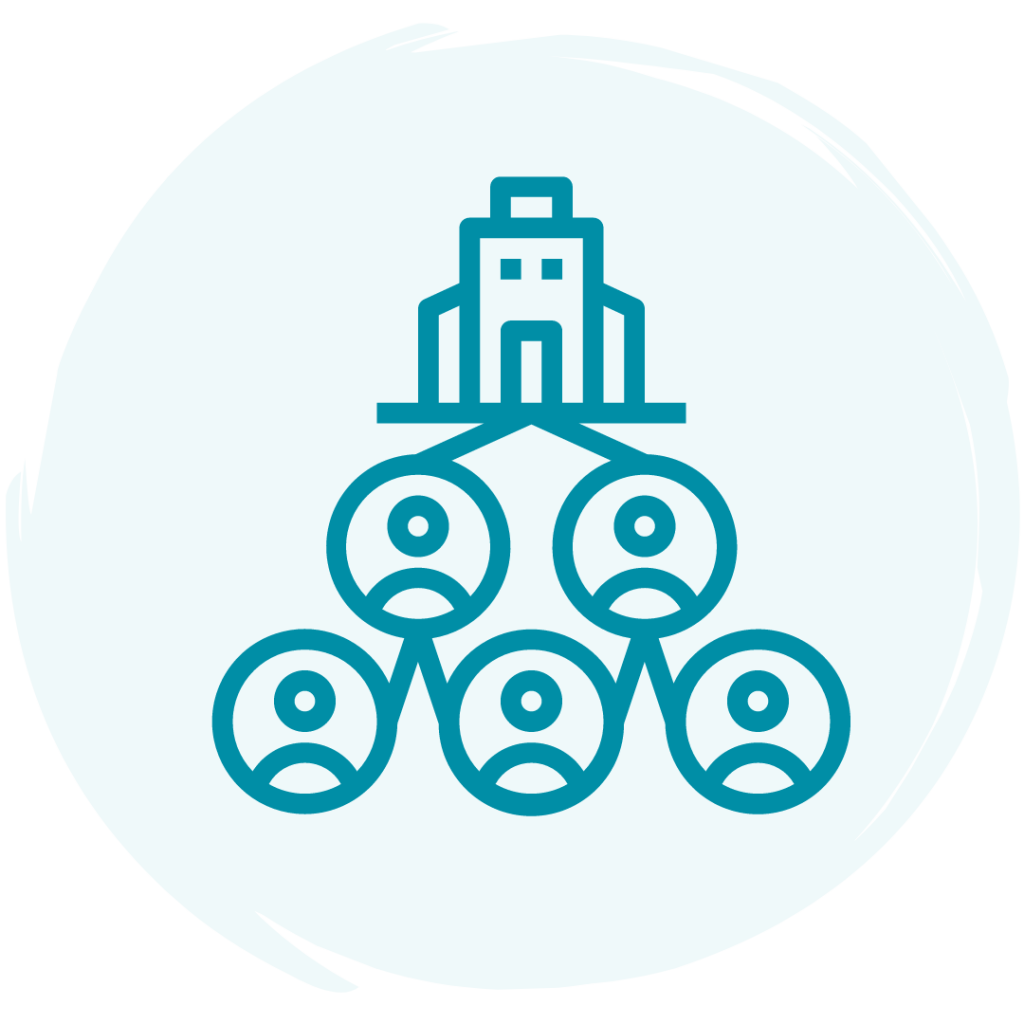ICP-FIN
Genom att anamma agila metoder och anpassa de finansiella processerna till agila principer blir finansavdelningen en kraftfull möjliggörare för smidigare verksamhet. Med Agile Finance kan organisationer snabbt anpassa sig och reagera på förändrade marknadskrav, frigöra tillväxtmöjligheter och säkerställa långsiktig framgång.
Beyond Budgeting är en managementfilosofi som utmanar traditionella budgetprocesser. Den förespråkar flexibilitet och anpassningsförmåga i ledningspraxis och erkänner att traditionella tillvägagångssätt kan vara stela, tidskrävande och inte kopplade till verkligheten i en snabbt föränderlig affärsmiljö.
Vår praktiska och djupgående kurs Agility In Finance ger värdefulla insikter i hur finans kan möjliggöra Business Agility. Den ger deltagarna den kunskap som krävs för att effektivt fördela finansiella resurser, utveckla agila ramverk för beslutsfattande och optimera resultatstyrningen i ett agilt sammanhang.
Genom att implementera Beyond Budgeting-konceptet får organisationer den flexibilitet som krävs för att navigera i komplexa och osäkra affärsmiljöer, vilket i slutändan leder till hållbar tillväxt och framgång.
Vår kurs är en dynamisk 2-dagars workshop eller tio engagerande 2-timmars online-sessioner, som leder till en Professional Certification i Agility in Finance with Agile People & Beyond Budgeting och ICAgile.
Om du arbetar med ekonomi och vill att din funktion ska vara drivkraften för Business Agility är det här utbildningen för dig. Lär dig hur du anpassar Beyond Budgeting-konceptet för att få en finansverksamhet med större flexibilitet, förbättrat beslutsfattande och förbättrade resultat under dynamiska marknadsförhållanden.
Våra interaktiva gruppsessioner uppmuntrar till erfarenhetsutbyte, diskussioner och praktiskt lärande via vårt Learning Management System (LMS).
Missa inte chansen att bli en ledande expert inom finansbranschen. Anmäl dig idag och få nya färdigheter, praktiska verktyg och oändliga möjligheter att lyckas!
Målgrupp

Ledare på alla nivåer vill veta hur man effektivt fördelar finansiella resurser, utvecklar smidiga ramverk för beslutsfattande och optimerar resultatstyrningen.

Ekonomichefer på alla nivåer vill driva Business Agility och reagera effektivt på förändrade prioriteringar och krav.

Konsulter som vill fördjupa sin agila förståelse för att bättre kunna stödja kunder i agila omvandlingar.

Agile-coacher vill lära sig mer om Beyond Budgeting-konceptet för förbättrat beslutsfattande och resursallokering.

Nyfikna personer som söker tillväxt och nya utmaningar och som tror på organisationer som sätter människan i centrum.
Vad skiljer våra kurser och utbildningsprogram åt?

Vår metod betonar interaktivt grupparbete, vilket gör det möjligt för deltagarna att lära av varandra genom att dela erfarenheter och kunskaper under engagerande gruppdiskussioner.

Kursen leder till en Professional Certification med Agile People och ICAgile. För att säkerställa högkvalitativa inlärningsupplevelser mot beprövade inlärningsresultat ackrediteras våra kurser av ICAgile, ett ledande globalt ackrediterings- och certifieringsorgan för agila metoder.

Med både online- och den fysiska workshopen får du tillgång till vårt Learning Management System (LMS), där du kan fördjupa dig i teorin och få djupgående kunskaper om ämnet i din egen takt.

Under utbildningen får du lära dig nya färdigheter och praktiska verktyg samtidigt som du knyter värdefulla kontakter. Som en del av vårt engagemang för din agila resa anordnar vi regelbundna evenemang för att berika din inlärningsupplevelse ytterligare.
På Agile People erbjuder vi kontinuerligt onlineutbildningar och personliga workshops. Vårt mål är att se till att alla deltagare får de kunskaper och färdigheter de söker, oavsett om de deltar virtuellt eller fysiskt.
Över hela världen levererar våra licensierade, erfarna utbildare våra kurser och program med samma engagemang, och vi är stolta över att ha detta globala fotavtryck. De erbjuder ofta undervisning på modersmålet för lokal förståelse och relevans.
Online via Zoom
Mer information om kursen

Workshoparna online och på plats omfattar tio huvudämnen och beskrivs mer detaljerat i vår kursbeskrivning.

Utbildningen omfattar tre perspektiv: individ (du), team (vi i vår grupp) och organisation (vi alla).

ICAgile ackrediterar våra kurser och program, och alla våra kurser har ett detaljerat inlärningsresultat.
Andra kurser

Bryggvägen 21
117 71 Stockholm
Sverige
Organisationsnummer: 559002-6836
Momsregistreringsnummer: SE559002683601

Copyright © 2023 Agile People AB.
Alla rättigheter förbehållna.
Sekretesspolicy | Användarvillkor |
Sverige
Kursen är uppdelad i tio engagerande sessioner.
Agilitet inom finanssektorn
Session FI1: Introduktion till Agile Finance
Den första sessionen i Agility in Finance-serien, “Introduktion till ICP-FIN”, ger en engagerande resa genom historien om management accounting och budgetering. Deltagarna introduceras till grunderna i finansiell flexibilitet mot bakgrund av VUCA (Volatility, Uncertainty, Complexity, and Ambiguity) och BANI (Brittle, Anxious, Non-linear, and Incomprehensible) och utforskar de makrotrender som omformar finansområdet. Genom att övergå från linjära till agila planerings- och projektprocesser får eleverna arbeta med verkliga fall för att fördjupa sin förståelse. Genom att kombinera traditionella metoder med moderna agila och lean-metoder utgör kursen en solid grund för ekonomer som vill möta kraven i dagens affärslandskap.
Session FI2: Interna utmaningar
Den andra sessionen i kursen i finansiell flexibilitet fördjupar sig i begreppet budgetering, dess tillhörande utmaningar och behovet av ledningsinnovation utöver traditionell budgetering. Deltagarna granskar kritiskt organisatoriska silos och dysfunktionella beteenden som härrör från stelbenta budgeteringsmetoder. Kursen tar upp McGregors teori X och teori Y för att belysa olika managementmetoder och deras inverkan på budgetering. Dessutom behandlas efterlevnad och regulatoriska perspektiv, särskilt inom bank- och revisionssammanhang, med betoning på balansen mellan extern och intern signalering. Denna session breddar deltagarnas förståelse för budgetering i en komplex och reglerad miljö, vilket främjar en övergång till mer flexibla och anpassningsbara finansiella metoder.
Session FI3: Lösningen – Översikt
Session tre av kursen i finansiell agilitet fördjupar sig i de komplicerade sambanden mellan affärs-, lednings- och verksamhetsmodeller. Deltagarna utforskar mångfalden av organisationer och deras kapacitet, och förstår betydelsen av processseparation i dessa sammanhang. Sessionen utmanar studenterna att utvärdera modeller för att se om de är ändamålsenliga och ifrågasätta om flexibilitet är fördelaktigt. Begreppet frikoppling introduceras också och eleverna uppmanas att fundera över i vilka situationer denna strategi kan vara till nytta. Denna session förbättrar deltagarnas förmåga att analysera organisationsstrukturer och strategiska beslut i strävan efter finansiell flexibilitet, så att de kan anpassa sin strategi för att bäst passa deras unika organisatoriska sammanhang.
Session FI4: Mål och indikatorer
I den fjärde delen av kursen i finansiell agilitet navigerar deltagarna från vision till konkreta milstolpar i form av mål, delmål och indikatorer. Kursen tar upp olika perspektiv på målsättning och diskuterar en övergång från stela, fasta mål till mer anpassningsbara, relativa mål eller till och med möjligheten att arbeta utan uttryckliga mål. Detta seminarium hjälper deltagarna att förstå balansen mellan strategisk vision och taktiskt genomförande, och främjar en nyanserad förståelse för målsättning i ett flexibelt finansiellt sammanhang. Det utvecklar förmågan att utforma effektiva och flexibla finansiella strategier som ligger i linje med organisationens bredare vision och de dynamiska realiteterna i affärsmiljön.
Session FI5: Strategisk resursallokering
Session fem i kursen i finansiell agilitet utmanar den traditionella konvergensen mellan mål, prognoser och beslut om resursallokering. Genom att lyfta fram potentiella konflikter i fråga om mål och motiv förespråkas en mer nyanserad strategi. Med utgångspunkt i Knut Fahléns “Dynamic Management Strategy” vägleds deltagarna i att skapa adaptiva resursallokeringsstrategier som harmonierar med organisationens interna och externa miljöer. Denna kurs ger deltagarna möjlighet att bättre hantera resurser i ett volatilt affärslandskap, vilket främjar anpassningsförmåga och strategisk inriktning.
Session FI6: Övervakning och prognoser
I den sjätte delen av kursen i finansiell agilitet utforskar vi prognosernas centrala roll i den finansiella styrningen. Studenterna fördjupar sig i metoder som Trailing 12 och Rolling 12, samt kortare trailingperioder som tre månader eller veckor, och belyser deras användbarhet för att fånga upp affärsdynamik. Kursen ger en interaktiv upplevelse där deltagarna kan tillämpa dessa metoder på sina egna data eller öva med tillhandahållna dataset. Detta praktiska seminarium ger deltagarna ovärderliga insikter i den praktiska tillämpningen av dessa prognosmetoder, vilket stärker deras förmåga att identifiera trender och fatta datadrivna finansiella beslut.
Session FI7: Lösningen – några praktiska exempel
I den sjunde sessionen av kursen i finansiell agilitet ges praktiska exempel på effektiv finansiell målstyrning, prognoser och finslipning av de färdigheter som introducerats i tidigare sessioner. Denna session utvidgas också till upphandlingsområdet och introducerar begreppen agil upphandling och agila kontrakt. Den hjälper deltagarna att förstå hur principerna för agilitet kan tillämpas utöver traditionell ekonomisk förvaltning och förbättra upphandlingsprocesser och avtalsöverenskommelser. Det förbättrar deltagarnas förmåga att införliva finansiell agilitet i ett bredare spektrum av affärsverksamheter, vilket möjliggör en mer heltäckande strategi för agil finansiell styrning.
Session FI8: Effekter på ledarskap och kultur
I den åttonde sessionen av kursen i finansiell agilitet breddar deltagarna sin förståelse genom att utforska tillämpningen av Stacy-matrisen och Cynefin-ramverket. Dessa modeller erbjuder värdefulla verktyg för att hantera komplexitet och osäkerhet i affärsmiljön. I sessionen ingår också att undersöka verkliga fall, ge konkreta exempel och betona vikten av etiska, agila metoder. Här får studenterna praktiska verktyg och insikter för att fatta välgrundade finansiella beslut i ett ofta osäkert och komplext affärslandskap.
Session FI9:
Förändring av roller och funktioner
Session nio av kursen i finansiell agilitet zoomar in på finansfunktionens specifika förutsättningar och utforskar begreppet modern agil styrning. Denna del av kursen utmanar traditionella kommando- och kontrollstrukturer och förespråkar mer dynamiska, decentraliserade beslutsprocesser som ökar lyhördheten och anpassningsförmågan. Den ger deltagarna en förståelse för hur finansfunktionen kan utvecklas i linje med agila principer, vilket banar väg för en mer innovativ, motståndskraftig och effektiv strategi för finansiell styrning i en ständigt föränderlig affärsmiljö.
Session FI10: Att praktisera flexibilitet i verksamheten
I den tionde och sista delen av kursen i finansiell agilitet går deltagarna igenom de begrepp och strategier som presenterats under kursens gång. Denna session är ett tillfälle att konsolidera förståelsen av finansiell flexibilitet, från att anpassa traditionella budgeterings- och resursfördelningsmetoder till att införa agila upphandlingar och kontrakt. Det stärker principerna för modern och flexibel styrning, utmanar kommando- och kontrollstrukturer och stöder ett mer dynamiskt och lyhört beslutsfattande. Som avslutning på kursen sammanställs lärdomarna från hela kursen, vilket förstärker vikten och tillämpbarheten av finansiell flexibilitet för att navigera i den moderna världens komplexa och volatila affärslandskap.
Anställa talanger
Finance With An Agile Mindset
Why Agile Finance
Adapting Finance To Agile Organizations
Changes Of Role And Perception
Agile Finance And The Business Ecosystem
Budgeting And Cost Management
The Imperative To Change Budgeting And Cost Management
Frequency Of The Budgeting Cycle
Targets, Forecasts, And Resource Allocation
Budgeting To Create Customer Value
Budgeting Across The Product Lifecycle
Empowering Teams To Manage Finances
What’s Different About Accounting
Agility And Financial Compliance
Agile Accounting Metrics
Accounting For Agile Initiatives
Agile Procurement
Overcoming Traditional Procurement Challenges
Agile Contracts
Utbildningen omfattar tre perspektiv:




Kul att du vill lära dig mer!
Hallå där! Jag heter Ingela och arbetar i kärnteamet på Agile People. Jag skulle gärna ta kontakt med dig och utforska möjliga lösningar.
Du kan skriva ett mejl till mig eller boka ett möte för att diskutera vidare!